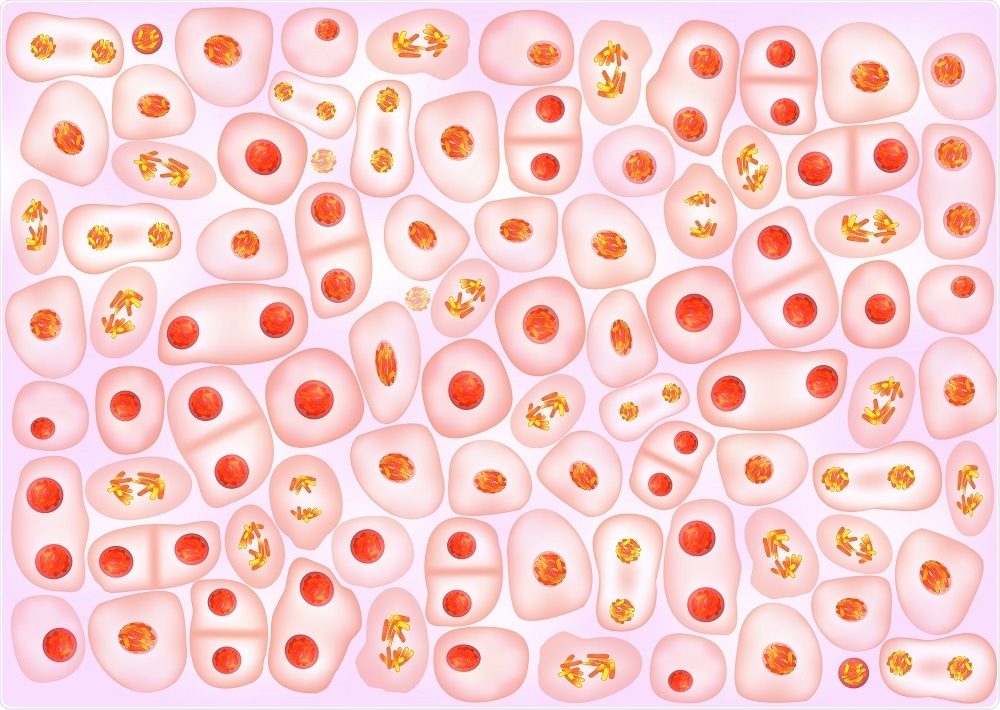
Human body is a mosaic pattern of DNA mutations, say researchers
Researchers have discovered that the human body’s 3 trillion cells aren’t clones of a single DNA sequence, as is widely believed. Instead, the cells of the human body contain a plethora of altered DNA, called mutations. These multiply to produce patches of tissue, called “somatic clones,” inside the ‘normal’ tissue. The scientific term for this phenomenon is mosaicism.
 Designua | Shutterstock
Designua | ShutterstockMosaic DNA arises when dividing cells undergo mutations because of random errors that occur during DNA replication. Many mutations also occur because of DNA damage due to external factors like high-energy radiation.
Mosaicism had already been examined in earlier studies through gene sequencing techniques, targeting specific genes in microscopic bits of individual tissues.
However, Gad Getz and his team at Massachusetts General Hospital, Boston, decided to use already available RNA sequences from the Genotype-Tissue Expression (GTEx) database, rather than rely on DNA sequences from tiny samples. GTEx has data based on normal tissue types from people who died from conditions other than cancer.
RNA can mirror DNA mutations because it is synthesized from DNA templates. However, not all DNA sequences are transcribed into RNA, so we could miss out a lot of mutations by only studying RNA. Also, the large size of the samples used in this project meant that the scientists were at risk of missing out unique DNA variants occurring in very small islands of mosaicism hidden among the ‘normal’ cells.
Normally, RNA transcripts also contain a lot of noise, or unnecessary sequences, and a special tool called RNA-MuTect was developed to identify somatic mutations while minimizing false positives.
Healthy DNA contains mutations too
Shifting to the study of RNA allowed researchers to sequence 6700 samples taken from 29 different tissues in about 500 individuals. Surprisingly, 95% of healthy individuals had at least one patch of mosaic tissue, with 40% of these being sizable in amount. Five or more types of mutations were found in 5% of the mutated tissues. Most of these mutations were not significant, but a number of them have also been seen in cancerous tissue.
The scientists found that some tissue types contained fewer mosaics than expected from previous studies, but far more tissues showed mosaicism than was previously known, even deeper tissues like the kidney, muscle, and liver.
As expected, mutation rates reflected environmental exposure, age-related exposure, and the rate of proliferation of the tissue. Thus tissues exposed to factors like smoke, pollutants, and ultraviolet rays (skin, esophagus and lung), had the highest mosaicism rates. Individuals of European origin had more mutations on skin exposed to sunlight, but not African-Americans.
Mutations piled up over time in tissues such as the lungs and the skin, which divide actively and are exposed to high concentrations of mutagens. These tissues, therefore, contained plenty of mutations in people over 45 years. This was not seen in more differentiated tissues which divide slowly or not at all.
Do mutations mean cancer?
Among the most frequently mutated genes was one called TP53, called “the guardian of the genome,” which helps repair damaged DNA. Some TP53 mutations have been found in cancer cells. However, these mutations do not produce cancer by themselves; additional mutations in other genes must occur before cancerous transformation actually occurs.
As researcher Erin Pleasance comments, “What we’re seeing are some of the earliest precancerous changes that are then going to accumulate more mutations.” Only a few of these may eventually turn into cancers.
Since all tissues used in this study were non-cancerous, the next challenge is to identify which of these mutations are normal variants and which are oncogenic, or cancer-producing. This differentiation is an important one in developing tools for the early detection of cancers.
“We expect that most of these clones would not ever become cancer; they grow but likely stop at some point,” according to Getz.
Another researcher, Cristian Tomasetti, had already developed sorting techniques to isolate tumor DNA from scraps shed by tumor cells (“blood biopsies”) into the bloodstream, to detect early cancers. It now appears that some of these mutations, thought to be cancer biomarkers, could have been shed by non-cancerous cells as well.
The study confirms that a healthy body contains a plethora of different DNA sequences, including some identified as cancerous. Much more research will be required to determine how to differentiate cancerous mutations from normal mosaicism.
Sources:
Yizhak K. et al. ( 2019). RNA sequence analysis reveals macroscopic somatic clonal expansion across normal tissues. Science. DOI: 10.1126/science.aaw0726
Nature. Ledford H. The human body is a mosaic of different genomes. nature.com/articles/d41586-019-01780-9























.png)











No hay comentarios:
Publicar un comentario